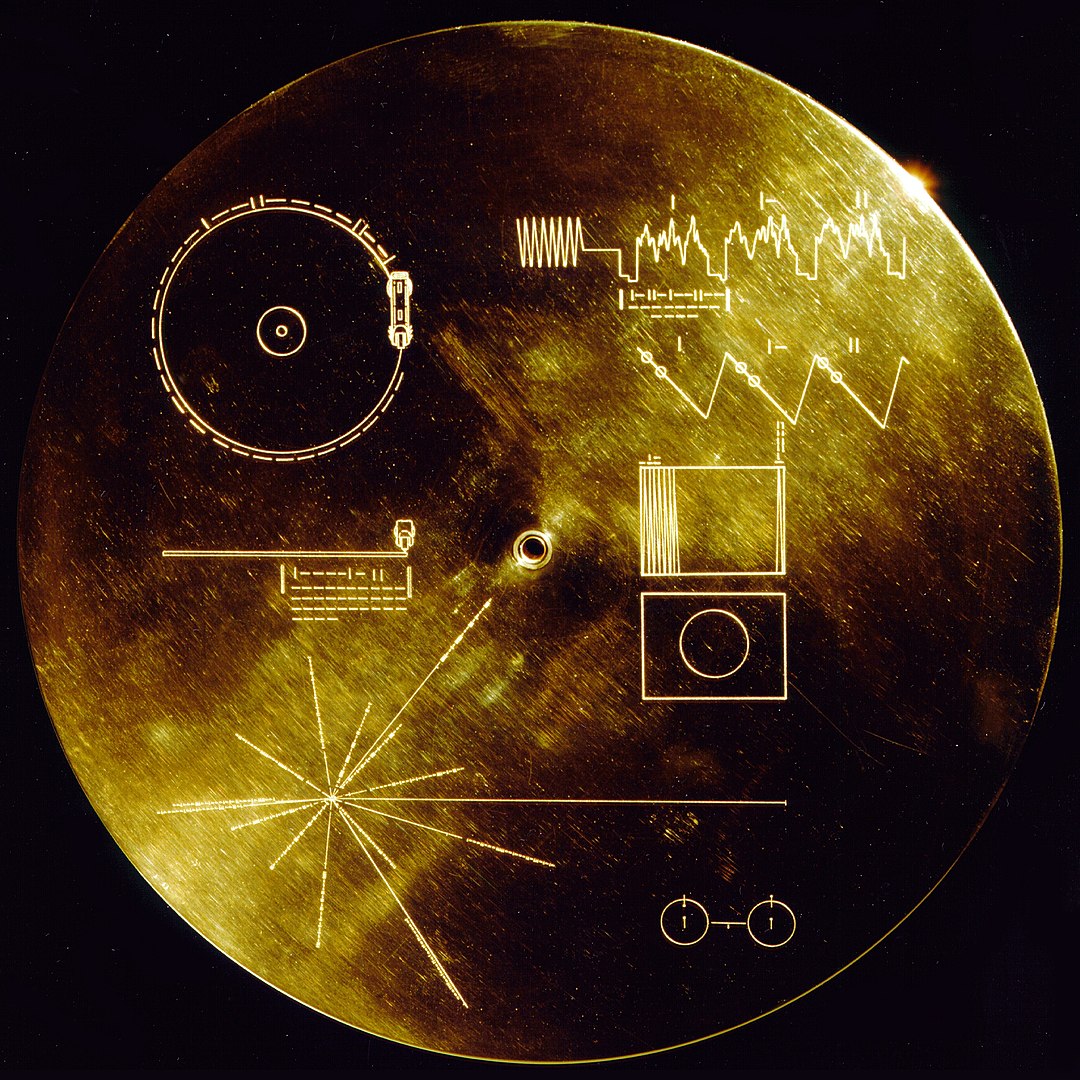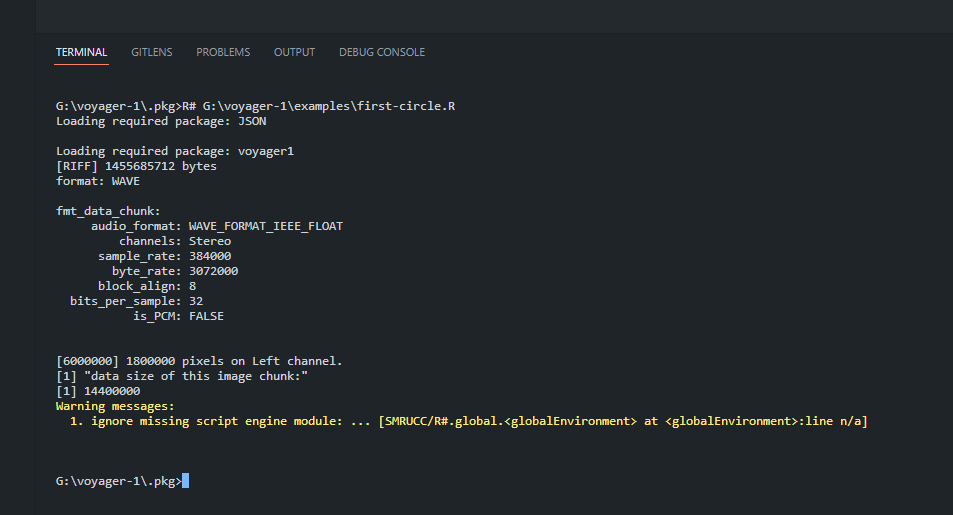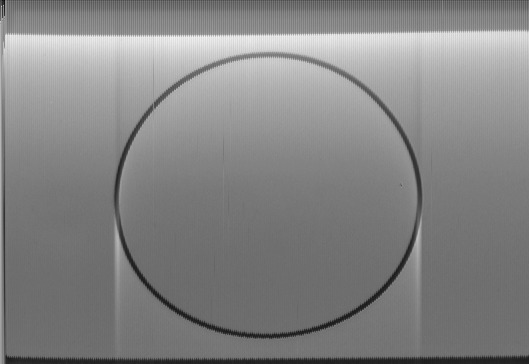Voyager 1 is a space probe that was launched by NASA on September 5, 1977. Part of the Voyager program to study the outer Solar System, Voyager 1 was launched 16 days after its twin, Voyager 2. --Wikipedia

this repository contains the necessary code for R# scripting to decode the image data on the Voyager Golden Record.
Credits: the test wav file data and part of the decoder algorithm implementation is comes from the project repository: Voyager-Golden-Record-Decoder.
Here is an example R# script for decode the first circle image in the goden record:
# R# "E:voyager-1Rscriptfirst-circle.R" --debug --ignore-missing-startup-packages
imports "voyager1" from "voyager-1";
imports "wav" from "signalKit";
const goldenRecord as string = "J:GoogleDriveVoyager384kHzStereo.wav";
# A demo R# script for image decode from the goden record wave data
# this very first circle image on the goden record is used for
# parameter calibration of the image decoder
using wav as read.wav(file = file(goldenRecord), lazy = TRUE) {
# view of the raw file data summary;
print(wav);
# parameters of the first circle image
# and wav decoder arguments
let first_circle = new image.chunk(channel = "Left", start = 6000208, length = 1928181);
let decoder = new decode(windowSize = 3400, offset = 217);
print(first_circle);
print("data size of this image chunk:");
print(wav :> chunk_size(chunk = first_circle));
# run decoder and save the
# result image file
wav
:> decode(chunk = first_circle, decode = decoder)
:> as.bitmap(white = 1.125)
:> bitmap(file = `${dirname(!script$dir)}/docs/circle.png`)
;
}Run the demo script with R# interpreter:

then the demo script should output an grayscale image that decoded from the wav data and looks like:

at last you could fine tuning the result image output in photoshop to make it more clarity.